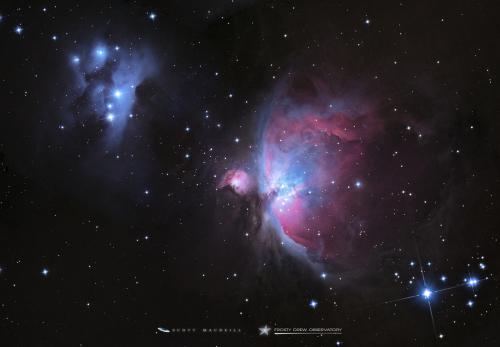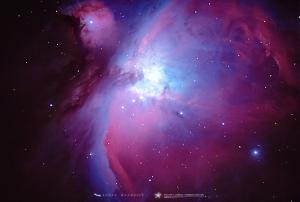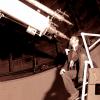The Orion Nebula Rings in the Holiday
The Holiday Season is descending upon us in full swing snugly-puppy mode, bringing with it warm thoughts of seasonal festivities and cold nights reveling in the winter time starscape. With the frequent lapse in memory that winter actually happens in New England every year, we often think of winter in a negative context. Well we can either sit by the heater and cry about early sunsets, closed beaches, and frozen toes; or we can bundle up, dive in and see all the amazing things winter time has to offer. And what better way to welcome in the darker and colder side of the year, than with a mesmerizing view of the vast Orion Nebula in a large telescope under super dark skies.
Residing in the constellation Orion, the Orion Nebula is the closest star forming nebula to the Solar System. At a distance of around 1,400 light years, the nebula spans about 25 light years in diameter. Inside the wisps of hydrogen gas and star light, thousands of infant stars are just taking shape with unformed planetary systems about to set out on their own evolutionary story. The nebula is naked eye visible as the middle star in Orion's sword, making this one of two naked eye star forming nebulae in the Northern Hemisphere.
Each night we have been seeing the fabled constellation Orion rising higher and earlier. Becoming visible over the Eastern horizon just before 8:00 p.m., the views are becoming truly spectacular. Aside from the Orion Nebula, the constellation Orion has dozens of fabulous objects to view, from dense multiple star systems, to the huge Barnard's Loop, which is a possible super nova remnant that covers most of the Orion constellation. So make this a season to call in the winter with happy thoughts of ginger bread cookies, smoking bishop, wassailing, cozy snuggle times, and awesome winter time stargazing!
- Author:
- Scott MacNeill
- Entry Date:
- Dec 5, 2024
- Published Under:
- Scott MacNeill's Columns



